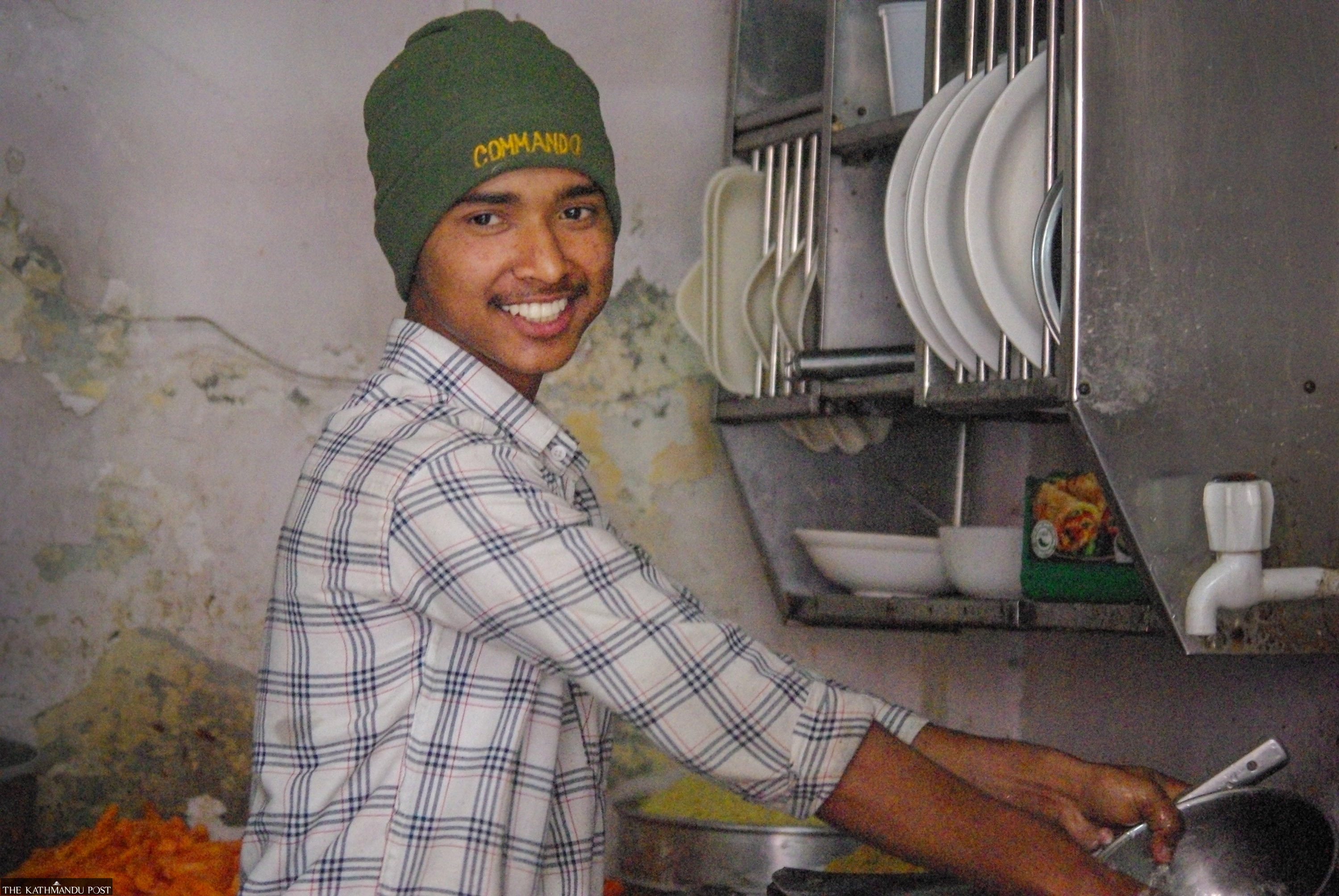Money
High school dropout runs flourishing eatery in Delhi
Trends show that nearly 1 million Nepalis will leave the country this fiscal year for better jobs abroad, apart from those going to India, officials say.
Mimamsha Dhungel
Uma Nanda Rana of Dang left for New Delhi, India after failing his grade 10 board examination in 1994. He desired a secure future and a stable source of income, and the Indian capital looked like the right place to seek his fortune.
Now 48 years old, he has been living there for almost three decades.
Rana possessed no academic credentials that would get him a white-collar job. The only work available to the high school dropout was washing dishes in a restaurant. So he became a dishwasher in Vasant Vihar.
“I washed dishes for two years. My options were limited,” said Rana.
In 1996, he graduated to waiting tables. “Those were hard days. I worked 12- to 16-hour shifts.”

The work was strenuous and the pay was low, so Rana decided he would try something else. From 2002 to 2008, he worked as a salesman, saving enough to go into business for himself.
He opened a small eatery in a rented space at Lajpat Nagar in South Delhi. “I rented the place from Harpreet Sethi and established an eating place. I named it Sethi’s Food Corner.”
Rana started the eatery with an initial investment of IRs65,000 (Rs104,000). Today, Sethi’s Food Corner bustles with customers.
The eatery is frequented by locals for its famous momo, chowmein and potato sticks, among other items.
“We’re doing well,” Rana said. “We make nearly IRs1 million monthly.”
Rana employs 12 people, 10 of them Nepalis. He pays IRs65,000 as monthly rental. The salaries of his staff range from IRs18,000 to IRs22,000 per month.

Puran Thedi, 21, from Dang joined Sethi’s Food Corner in 2017. “I left home when I was 16. I had just passed grade five,” said Thedi.
He too struggled. “We didn't have any money, and life back home was difficult,” he said. “I had to earn a living for myself and my family.” Thedi sends some of his savings home.
Nepal and India share an open border as per a treaty signed in 1950. Nepalis and Indians can travel freely across the border and work, and are treated on a par with native citizens.
The tradition of Nepalis leaving the country for better jobs started with the seasonal migration to India.
Until 1990, it was difficult for ordinary people to get a passport, according to reports. India does not require a passport, and it was the only option for common peasants facing extreme exploitation in Nepal. Indebtedness and lack of income to pay taxes drove many people to migrate to India.
In 2001, the Maoist conflict that started in 1996 worsened, and people started crossing the border in droves.
According to the Asian Centre for Human Rights, since 1996, an estimated 350,000 to 400,000 Nepalis have been internally displaced from their villages, many of whom make their way into India.
The Department of Foreign Employment says the number of Nepalis working in overseas countries started to increase after 2000 when the Maoist insurgency reached a peak.
In the fiscal year 2000-01, just over 55,000 Nepalis went abroad. They sent home a little over Rs47 billion. With the country’s economy suffering due to the insurgency, Nepali youths had no choice but to go away.
From just 3,605 migrant workers who were given work permits in 1993-94, the numbers started to multiply, reaching a high of 527,814 individuals in 2013-14, a jump of nearly 147 times in two decades.

This fiscal year, migration trends show that nearly 1 million Nepalis will leave the country for better jobs abroad, apart from those going to India, officials said. There is no authentic data on how many Nepalis go to India annually.
Balbahadur Thapa, 58, from Bardiya has been living in New Delhi for the past three and a half decades. He is an employee at Sethi’s Food Corner. Thapa says he visits his family in Nepal every other year.
“I left for India due to compulsion. I have eight children at home. The restaurant job has allowed me to take care of them,” said Thapa.
“The Nepalis who work at Sethi’s Food Corner are my family,” says Sethi, the landlord and Rana’s business partner.
“I have been working with Rana and some of his older employees for the last 15 years. We have built a strong connection.”
Rana praises Sethi for renting him the place to start a business. “Sethi helped me when I was struggling,” he said.
In 2009, Rana opened another eatery named Shanghai Kitchen in partnership with a friend, Binod Tiwari.
Hailing from Dhanusha in the southern Tarai plains, Tiwari, 48, says that both their business and friendship have grown.
“Rana and I used to wait tables together. We didn't plan to build our own restaurant in Delhi,” said Tiwari. “Being away from home is hard, but having friends in a strange land is comforting.”




 9.88°C Kathmandu
9.88°C Kathmandu














